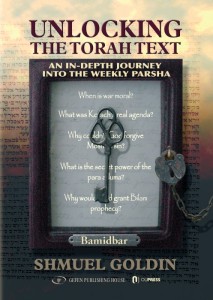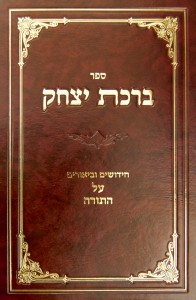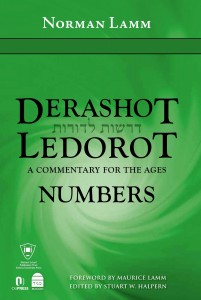Excerpted from Rabbi Shmuel Goldin’s Unlocking the Torah Text – Bamidbar, co-published by OU Press and Gefen Publishers
 Why Bother
Why Bother
Context
Fearing the apparent strength of the Israelites, Balak, the king of Moav, attempts to secure the services of Bilam, a Midianite sorcerer, to curse the nation.
God eventually allows Bilam’s participation in Balak’s plot, but warns the sorcerer: “Only the thing that I shall speak to you – that you shall do.”
Bilam’s repeated attempts to curse the Israelites are thwarted as God transforms the sorcerer’s curses into blessings.
Questions
No story in the Torah is stranger then the story of Balak and Bilam.
Why does God find it necessary to intervene in order to prevent Bilam from cursing the Israelites? We can certainly understand a divine move to preempt a physical threat against the nation. What danger, however, is potentially carried by a verbal threat such as Bilam’s curses? Why does it matter what this sorcerer says? Why can’t God simply choose to ignore him?
Deepening the puzzle is a fascinating fact concerning the story of Balak and Bilam: this is the only story in the Torah – since the patriarch Avraham enters the historical stage – that takes place totally out of view of the Israelites, their emissaries or their ancestors.
This narrative is comprised of a series of events, interactions and conversations at which no Israelite is present. Had God not informed us of these events, we would never have even known that they happened. Bilam would have pronounced his curses, God would have simply ignored them, and the Israelites would have gone blissfully on their way, forever unaware of Bilam’s words. Who knows how many other unnoted verbal threats were directed against the Israelites during the biblical era, their echoes fading into the mists of history. What makes this episode worthy of God’s or our notice? Why is the narrative of Balak and Bilam included in the Torah at all?
Approaches
A
One perspective on the issues we raise is reflected in our discussion concerning Bilam’s power to bless or curse (see previous study). According to this approach, the threat posed by Bilam’s words emanates from God’s own decision to grant strength to man’s speech.
At the dawn of Jewish history, at the launch of Avraham’s journey, God promises the patriarch: “And you will be a blessing.” This statement is understood by the Midrash to mean “Blessings are given to your hand. Until now they were in My hand. I blessed Adam and Noach. From this time on you will bless whom you wish.”
As a result of this heavenly decree, every word spoken by man about another, for good or for bad, acquires power. God therefore moves to abort Bilam’s curses before they can acquire the power of spoken words.
We further suggested that Bilam’s words might have carried singular strength, either due to his close, albeit mysterious relationship with God, or as a result of his singular ability to tap into preexisting conditions in his environment and direct them against his enemies (see previous study, Approaches G).
God’s own self-imposed limitations in the face of man’s speech and/or Bilam’s ability to manipulate the very rules created by God to govern His universe may well have enabled the sorcerer to seriously threaten the Israelites through his words. God therefore moves to stop those words from ever being spoken.
This approach to Bilam’s threat is underscored in the Midrashic pronouncement “There were no days, from the day that the world was created, when the Holy One Blessed Be He needed to be with [the people of] Israel as much as the time when Bilam wanted to destroy [them] from the world.”
B
Other commentaries are unwilling to consider the possibility that Bilam’s words could have directly threatened a people protected by “the righteousness of the patriarchs and the merit of the Revelation at Sinai.” God is compelled, these scholars argue, to change Bilam’s words for other reasons.
The Ibn Ezra, for example, suggests that God acts to prevent the surrounding nations from arriving at an erroneous conclusion that would damage the nation’s honor. In the aftermath of Bilam’s efforts, the Israelites endure a devastating plague as a result of the sin of Ba’al Pe’or. Had Bilam been allowed to curse the nation, observers would have mistakenly concluded that this plague had actually been caused by the sorcerer’s curses.
Similar explanations are offered by later authorities who, likewise, maintain that God intervenes so that observers will not attribute later failings of the Israelites to the effect of the sorcerer’s curses. The Abravanel, however, rejects the Ibn Ezra’s approach, failing to see within it any compelling threat against the Israelites. How then, the Abravanel asks, are we to view the textual sources clearly testifying that, had it not been for God’s merciful intervention, Bilam’s curses would indeed have had devastating impact upon the people?
The Abravanel therefore posits a real, albeit indirect, threat potentially presented by Bilam’s words. As Balak himself clearly testifies, by the time the story begins, Bilam has earned public renown for his perceived powers in the area of blessing and curse. Had the sorcerer been allowed to pronounce his intended curses, surrounding nations would have heard and would have been encouraged to attack the “newly vulnerable” Israelites. “Open season” would have been called on the fledgling nation. Once God transforms Bilam’s curses into blessings, however, the special status of the nation in God’s eyes becomes readily apparent to all, rendering the people safe from attack.
A similar interpretation is suggested by Rabbi Meir Simcha Hacohen of Dvinsk, who maintains that God intervenes in the Balak/Bilam story in order to “thrust the fear of Israel upon all the kings of the nations.” Once someone of Bilam’s stature blesses the Israelites, surrounding nations will be fearful of moving against them in any way.
A creative approach to the impact of Bilam’s words is offered by Rabbi Shimshon Raphael Hirsch, the pivotal rabbinic leader of nineteenth-century German Jewry whose emphasis on the universal role of the Jewish nation serves as a foundation of his religious philosophy. God visits specific individuals, whether Jewish or Gentile, with prophetic vision, to enable them to bring forward His message to the world. In this case, God wants Bilam to bless the Israelites in his role as a prophet, not for their sake, but for the sake of the surrounding nations. He wants the world to recognize that this is a “blessed people,” whose very character and mission reflect God’s will for mankind as a whole. When Bilam attempts to subvert this prophetic mandate by cursing rather than blessing the Israelites, God steps in to ensure that the intended divine message to mankind will be properly transmitted and received.
C
Another possible approach to the significance of Bilam’s words can be gleaned from a puzzling rabbinic observation that, at first, seems only to deepen the mysteries before us. In the book of Devarim, as Moshe recounts the Bilam-Balak episode in retrospect, he relates: “And God transformed, on your behalf, the curse into a blessing.”
Why, ask the rabbis, does Moshe speak of a singular transformation of “the curse into a blessing”? Weren’t multiple curses transformed into blessings during this episode?
The answer suggested by the scholars threatens to undermine the thrust of the entire Balak/Bilam narrative:
Rabbi Yochanan stated: From the blessings pronounced by Bilam, one can determine what was in his heart…. Rabbi Abba bar Kahana [further] maintained: [due to the sins of the Israelites] all of them [the blessings] reverted back to the original curses [my italics], with the exception of the blessing concerning synagogues and houses of study, as the Torah states, “And God transformed, on your behalf, the curse into a blessing”: “the curse” and not “the curses” [my italics].
How astounding! The rabbis would have us understand that, in the final analysis, God’s intervention in the Bilam story has limited effect. After God “troubles Himself” to change the sorcerer’s curses into blessings (an act whose necessity we have already questioned), almost all of those blessings turn back into curses. Perplexingly, the Balak/Bilam story now seems to make even less sense. Why does God bother to transform Bilam’s words if, in practical terms, those words are not truly “transformed” at all?
Perhaps the rabbis, in their own inimitable style, answer all of our questions at once. Fundamentally, they maintain, God’s message through the Balak/Bilam narrative is surprising but clear: It does not matter what Bilam says!
Phenomena like Bilam’s words ultimately have no independent power. Although God may grant credence to words spoken by man, such words are not the primary determinants of an individual’s fate.
This sorcerer can curse you or bless you; it makes no difference. Your destiny will be decided not by outside forces, but by your own merit. Your own actions will determine whether you are “cursed” or “blessed.”
Had God allowed Bilam to proceed with his intended curses, the Israelites, upon hearing of the sorcerer’s words (or barring that, upon learning of similar phenomena) could have claimed them as justification for their failings: How could we be blamed? Were we not doomed from the start?
God therefore decides to use the Balak/ Bilam episode as a teaching opportunity. He intervenes, changes the sorcerer’s curses to blessings and reveals the entire episode to the Israelites from the start. In doing so, He effectively proclaims: Now I have removed any possible excuse. The words pronounced upon you by the sorcerer are positive. The final significance and impact of those words, however, like so much else in your lives, is in your hands. If you are meritorious, Bilam’s blessings will remain intact. If not, those very “blessings” will be turned against you.
Always remember that your story will be defined by no one else. You can blame no outside force. Ultimately, it’s all up to you….




